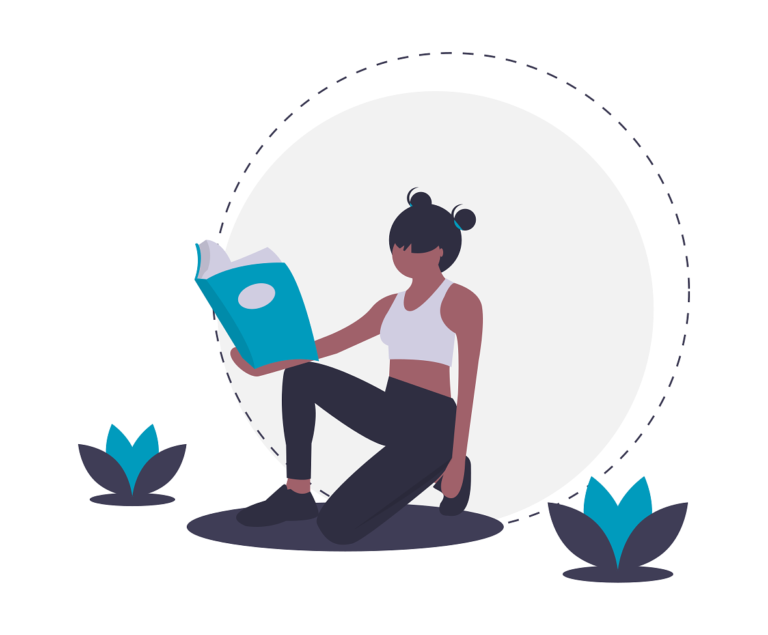Which twelve strategies improve reading speed?

This is the second of three lessons about Improving Reading Speed. To complete this course, read each lesson carefully and then unlock and complete our materials to check your understanding.
– Introduce twelve strategies for improving reading speed
– Explain each of the twelve strategies in turn
– Use images and examples to help engage the learner
Before you begin reading...
-
video and audio texts
-
knowledge checks and quizzes
-
skills practices, tasks and assignments
Lesson 2
This second lesson in our short course on improving reading speed next focuses on the twelve most useful tips for learning to read more quickly and effectively. While some online businesses may attempt to convince you that reading speed can be improved in a day or by using technology, in truth (and like any skill) it is only through practice, time, and understanding the following strategies, that English learners can improve their reading success. Remember that the average university-level student reads at about 200-400 words per minute – and that the human eye is limited by how fast it can move. What this means is that any website that claims you could learn to read at 3,000 words per minute most likely simply wants your money.
Strategy 1: Warm Up Your Brain
Our first tip for improving your reading speed is to activate your brain just before the reading. If you have some idea of the topic of the reading, then there are a number of pre-reading tasks that you can do (see our section on reading practice). For example, you could brainstorm any vocabulary that might be useful for that topic, do some research into relevant concepts, or even do some reading using similar texts. Ultimately, if your brain is better prepared for the reading to come, then it should be able to read that text more easily and therefore more quickly.
Strategy 2: Use Skimming and Scanning
As was explored in Lesson 1, skimming and scanning techniques can be very useful for readers for determining the overall gist of a reading text or for locating specific pieces of information. When preparing to read something quickly, students may wish to first skim and scan that text completely before beginning to read it. Having some comprehension of the overall topic of the article may in turn make your reading speed more fluid and your brain better prepared.

Strategy 3: Practice, Practice, Practice
As with any other skill, there really is no better strategy for improvement than to practise as much as possible – hence the saying ‘practice makes perfect’. In the context of speed reading, readers should (1) give themselves plenty of opportunity to read, (2) read texts that challenge them and push their ability, and (3) evaluate their own strengths, weaknesses and incremental development. In truth, speed reading requires quick eyes and a quick brain, and the only real way to develop this quickness is through ample reading practice.
Strategy 4: Avoid Subvocalisation
Our fourth strategy for improving reading speed is to do your best to avoid subvocalisation – which isn’t easy! Subvocalisation is when you can almost hear the words in your head when you’re silently reading them. You may also find yourself moving your lips as your read, which of course is an unnecessary process. While subvocalisation is very natural and we all do it, it can slow down the pace of your reading by some degree. Learning how to avoid it, however, is somewhat difficult. The only real way to do this is to practise consciously and carefully avoiding subvocalisation. While it may feel strange at first, start by looking at (and thinking about) words on the page without mouthing them or saying them in your head.
Strategy 5: Avoid Backtracking
One of the biggest mistakes that new speed-readers make is that they allow their eyes to backtrack, which over the course of entire book could cost them a lot of time. To avoid returning to any words that you’ve already read, (a) try not to worry about vocabulary items that you’re not confident with, focusing more on overall meaning, and (b) train your eyes to move across the text more consistently. To train your eyes in this way, perhaps practise without a book by moving your eyes from left to right at a consistent reading speed.
Strategy 6: Read in Chunks
While you may not realise you’re doing it, skilled readers never read every single word and instead comprehend a text in short chunks or phrases. Small grammatical words in particular such as prepositions or determiners can usually be almost ignored by the reader as it is the lexical words such as verbs and nouns which carry the majority of the meaning. Take a look at the following example and see how it can be understood without its grammatical words. Then perhaps practise reading lines of text in similar chunks to see if that helps improve your speed:

Strategy 7: Use a Pointer
The seventh tip on our list is to use a device to help you read in a straight and consistent line, such as by using your fingers as a pointer or a piece of paper to cover the text you’ve already read. When using a pointer such as your finger, train yourself to move that pointer at a consistent speed across the text and your eyes should quickly learn to move at that speed too.
Strategy 8: Don’t Daydream
Daydreaming is when you realise that you’ve stopped paying attention to the text you’re reading, and this is one of the worst enemies of speed readers. If you catch yourself thinking about something else or even thinking too much about the text you’re reading, then you’re not really reading that text at all. You may even find that your eyes have continued to read the lines and sentences but your brain has not absorbed any of the information found in the last paragraph, and therefore you will have to read it again. Whenever you catch yourself daydreaming like this, return back to your reading text immediately. And if you’ve thought of something important that you must remember, then make a quick note of it and continue reading.
Strategy 9: Race the Clock
As with any skill that you wish to improve your performance with, setting yourself targets against a clock can be a valuable way of increasing speed. Determine the length of a reading text by knowing its word count, and start your timer when you begin to read it. By stopping that timer at the end of your reading and checking your final time against the length of the text, you should be able to accurately calculate your general reading speed for future reference.

Strategy 10: Measure Your Improvements
Of course, it’s not enough to simply time yourself when reading: you’ll also need to measure your improvements. This means conducting reading tests (Lesson 3 will recommend some of these). You’ll need to know the length of the reading and how long it took you to read it to measure your improvement. To calculate your reading speed, divide the number of words by the number of seconds it took you to read and then times that by sixty. For example, a five-hundred word reading that took two minutes to read would be calculated at 500/120 X 60 = 250 words per minute. The next time you read, you will therefore have a personal best that you can aim to beat.
Strategy 11: Check Your Comprehension
Considering strategies 9 and 10, it’s not effective (particularly in academic contexts) if you can read very quickly but cannot remember much of what you read. Most reading tests will therefore also ask you simple comprehension questions based on the text to determine your level of understanding. Your reading speed will in turn be a combination of how many words you read per minute versus how much of the content you understood. While a world-champion speed-reader might be able to read 2,000 words in one minute, their comprehension is usually only about 50% – which is not enough when conducting research for an academic assignment. Students should be aiming to comprehend around 75% and above when researching.
Strategy 12: Improve General Fluency
In addition to the previous eleven strategies, a speed reader should also aim to improve their general English ability. Any vocabulary or complicated grammar that you don’t know will only slow you down, potentially causing you to backtrack or to stop and think. There are hundreds of materials here on Academic Marker to help you improve your general fluency, and completing these will almost certainly have a positive impact on your reading speed.
To learn how you can accurately test your reading speed, continue on to Lesson 3 where we recommend useful websites and provide a helpful reading-speed test.
Downloadables
Once you’ve completed all three lessons about improving reading speed, you might also wish to download our beginner, intermediate and advanced worksheets to test your progress or print for your students. These professional PDF worksheets can be easily accessed for only a few Academic Marks.
Collect Academic Marks
-
100 Marks for joining
-
25 Marks for daily e-learning
-
100-200 for feedback/testimonials
-
100-500 for referring your colleages/friends